

|
|
American Helmets (1940-Current): |
 |
| ||||||||||||
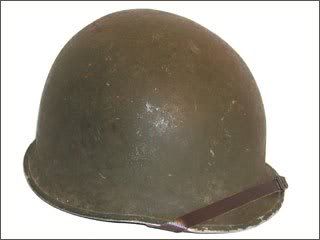 |
American M1 Helmet
The M1 went through a series of modifications throughout World War II. This example, which would have been used from 1943 on, features a front rim seam and hinged loop for the chinstrap. | ||||||||||||
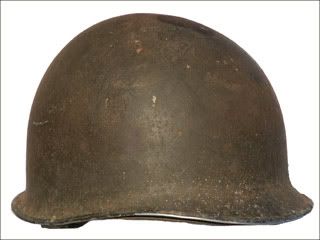 |
American M1 Helmet
A later World War II M1 steel pot. | ||||||||||||
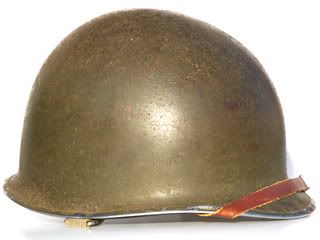 |
American M1 Helmet
A later World War II M1 steel pot. | ||||||||||||
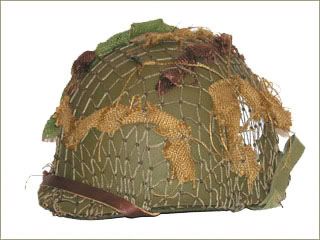 |
American M1C Paratrooper Helmet
American M1C paratrooper helmet; recreated with original World War II parts, this example has been painted with the field markings of the 101st Airborne Division, 506th parachute infantry regiment (the same group from the HBO series Band of Brothers) | ||||||||||||
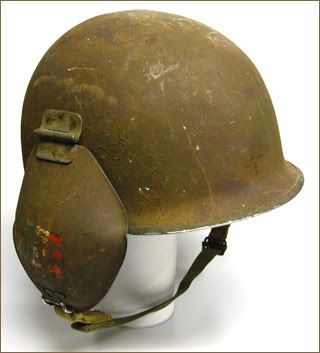 |
American M3 Anti-Flak Helmet
A hybrid of the M1 helmet, the M3 was developed for use by aircrews. These helmets were manufactured by McCord Radiator and Manufacturing Company of
Detroit.
This example features handpainted flags on each ear flap, possibly indicating use by aircrews based in Italy.
| ||||||||||||
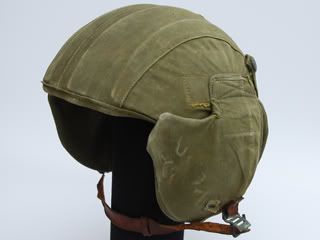 |
| ||||||||||||
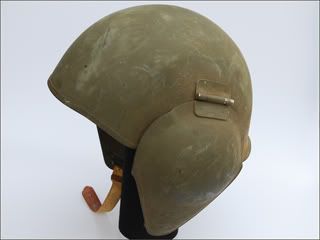 |
American M5 Anti-Flak Helmet
The M5 helmet combined the elemetns of the M1 and M3 helmets, and was designed to replace all existing anti-flak helmets. Nearly 100,000 were made by the end of the Second World War. | ||||||||||||
 |
American Mk 2 Naval "Talker" Helmet
The Mk 2 "Talker" helmet was developed in 1942 for naval personnel, allowing communications headgear to be easily worn under the helmet. | ||||||||||||
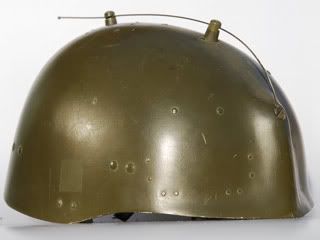 |
| ||||||||||||
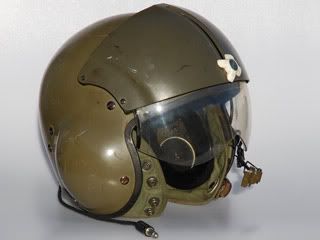 |
| ||||||||||||
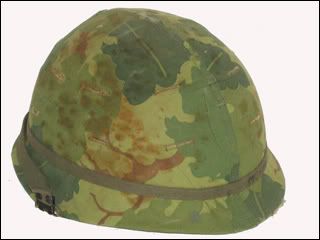 |
American M1 Helmet with Vietnam War Era Cover
This example features the reversible woodland pattern cover. The removable liner features the Distinctive Unit Insignia of the U.S. Army Administrative Schools Center. | ||||||||||||
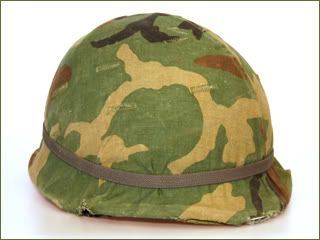 |
American M1 Helmet with Post Vietnam War Era Cover
This example features the final woodland pattern cover, and dates to the 1970s. | ||||||||||||
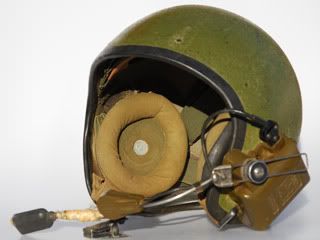 |
American T-56 Crewman Helmet
Introduced in the 1950s the T-56 was the first helmet designated as the Combat Vehicle Crewman's (CVC) helmet rather than tank helmet. The helmet featured its own self-contained communications and microphone system. | ||||||||||||
 |
American T-56 Crewman Helmet Variation
A variation of the T-56 CVC helmet with larger boom microphone. Otherwise the helmet is the same as the model above. | ||||||||||||
 |
American DH-132A Crewman Helmet
The Combat Vehicle Crewman's helmet (CVC) was developed in the 1970s by the Gentex Corporation. It was a four part system with an outer shell, inner liner, earphones and a microphone. The outer shell is made of Kevlar and resins.
This example is the upgraded model with improved outer shell, which was introduced in the late 1980s.
| ||||||||||||
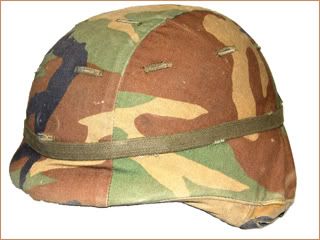 |
American PASGT Kevlar Helmet
The Personnel Armor System Ground Troops (PASGT) helmet was developed in the 1970s as a replacement for the M1 steel helmet. This helmet was first used in combat during the 1983 Grenada invasion and remains in service today.
This particular example features a desert combat cover of the style used in the early 1980s.
| ||||||||||||
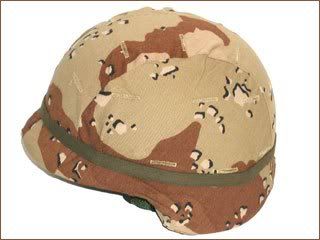 |
American PASGT Kevlar Helmet
This particular example is a later version of PASGT helmet, and features a desert combat cover of the style used in the First Gulf War in 1991. | ||||||||||||
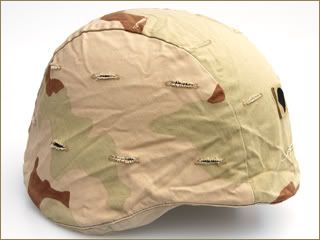 |
American PASGT Kevlar Helmet
This particular example is a later version of PASGT helmet, and features a camouflage of Operation Iraqi Freedom from 2003. | ||||||||||||
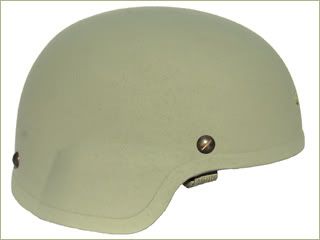 |
| ||||||||||||
 |
American Mk-7 Talker Naval Battle Helmet
A current issue Mk-7 helmet made by Gentex. The MK-7 Naval Battle Helmet is specifically designed for combat missions faced by U.S. Naval crews onboard naval vessels. | ||||||||||||